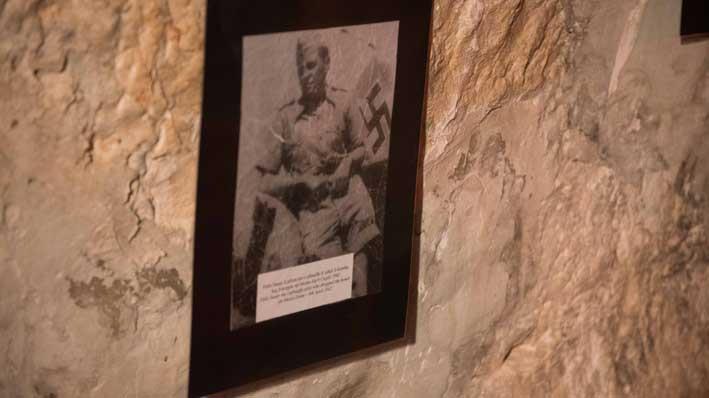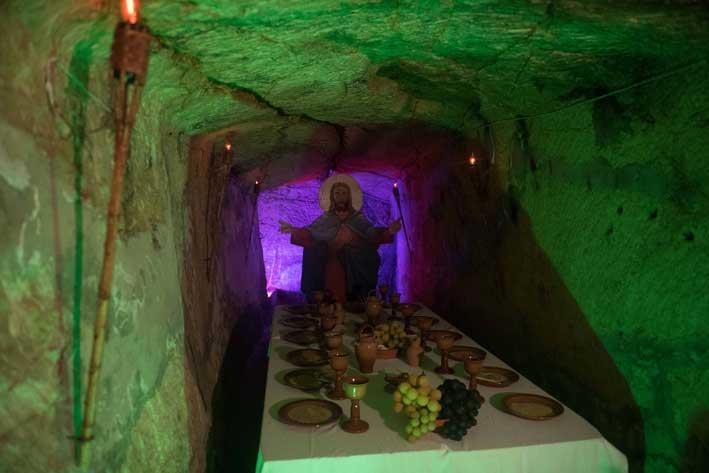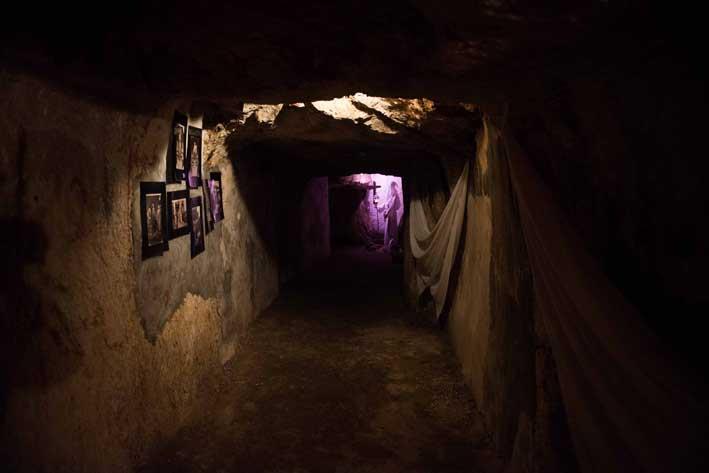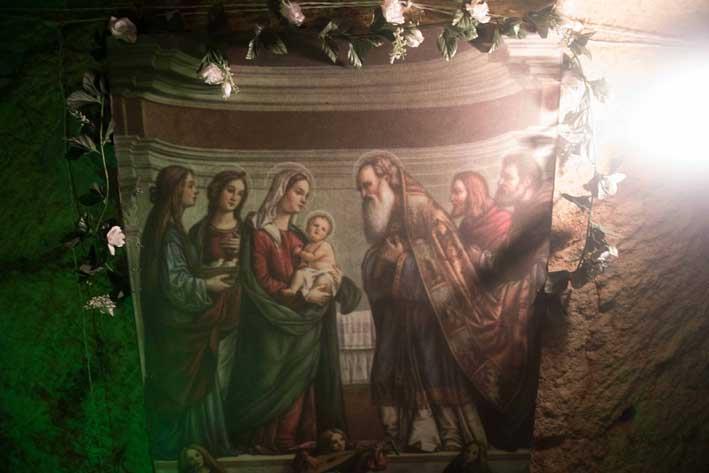The wartime shelter dug underneath the main square in Mosta has been reopened to the public after many years. This time, the organisers want to offer something which is related to this time of year. That is why the 15 t’Awwissu band club has decided to combine the shelter’s World War II history to the solemnity of Holy Week.
The Malta Independent paid a visit to the shelter, which is not particularly large, and met with Fr David Muscat, who showed us around this underground attraction. “You will not be impressed with the size or complexity of this shelter,” Fr Muscat warned as we entered the chilly underground space.

Photos and video Baskal Mallia
Surprisingly, there was no strong smell of humidity. What immediately got our attention was the smell of wine and incense, typical of Good Friday traditions. The hundreds of cars and people walking above us did not disturb the silence in the shelter. Somehow, the hard rock in which the dugout was built provides enough insulation to keep the noises out.

The type of rock found in this area of Mosta was a very relevant factor to how the shelter was constructed. “This shelter, unlike the shelters in the other localities round the island, is not built in a way to fit a lot of small rooms. In fact, this one is simply formed by three interconnecting corridors.”
Fr Muscat explained that when works started, the diggers realised that the rock was very hard – not easy to dig.

Although small, the shelter still has the most important elements of any other wartime bomb refuge. This one, for instance, has multiple exit and entry points - four in all. One of the rooms is covered in tiles. It appears that the tiles were used to keep the place as clean as possible, and that it was used as the room where women would give birth.

Interestingly enough, the shelter was not always the first option for the Maltese fleeing the streets as the Germans bombed our island.
“In the beginning, people would seek shelter inside the Mosta church. For some reason they believed that the place where the coffins used to be stored (il-kenniera) was actually safer.”
They soon realised that while the church provided spiritual shelter, it could could not protect them from the bombs.

The shelter features the iconic Last Supper table and the seven Ladies of Sorrows. It does not feature the Via Sagra, as most Good Friday exhibitions do, but it does offer the audience something extra. In fact, the main corridor in the shelter is full of old photos showing some very interesting events which took place at around the same period when the Mosta Dome was hit by an aerial bomb.
“This Easter period is particularly important for us here in Mosta. It was during this period, some 75 years ago that Malta was being peppered with German bombs, including the famous incident in Mosta.”

One can also observe rare photos such of that marking the occasion when Mons Mikiel Gonzi was made Archbishop of Malta. The photo shows the Archbishop Gonzi on the back of horse amid the religious celebration.
